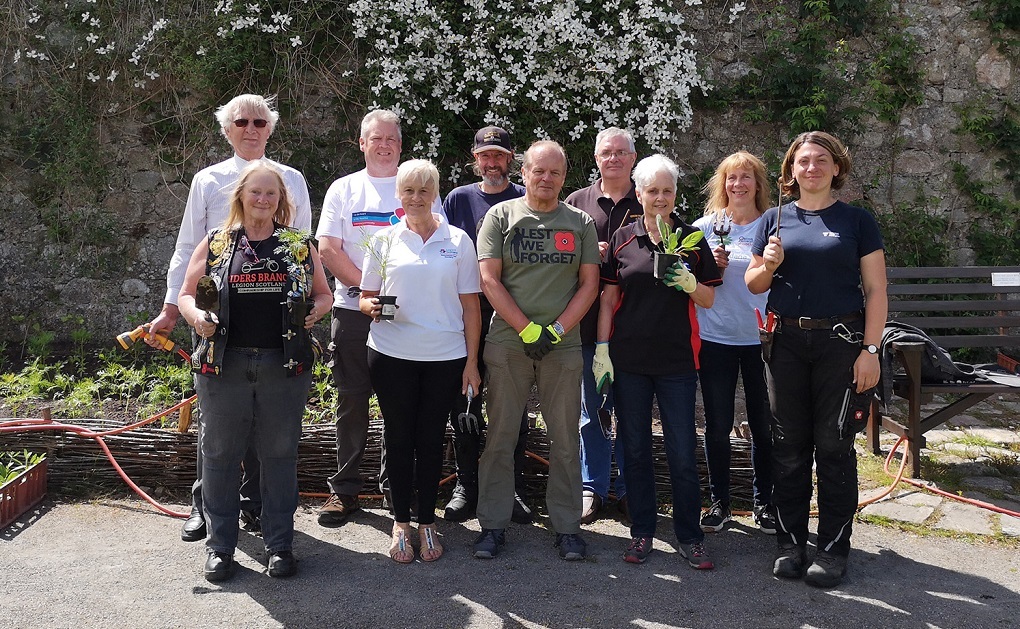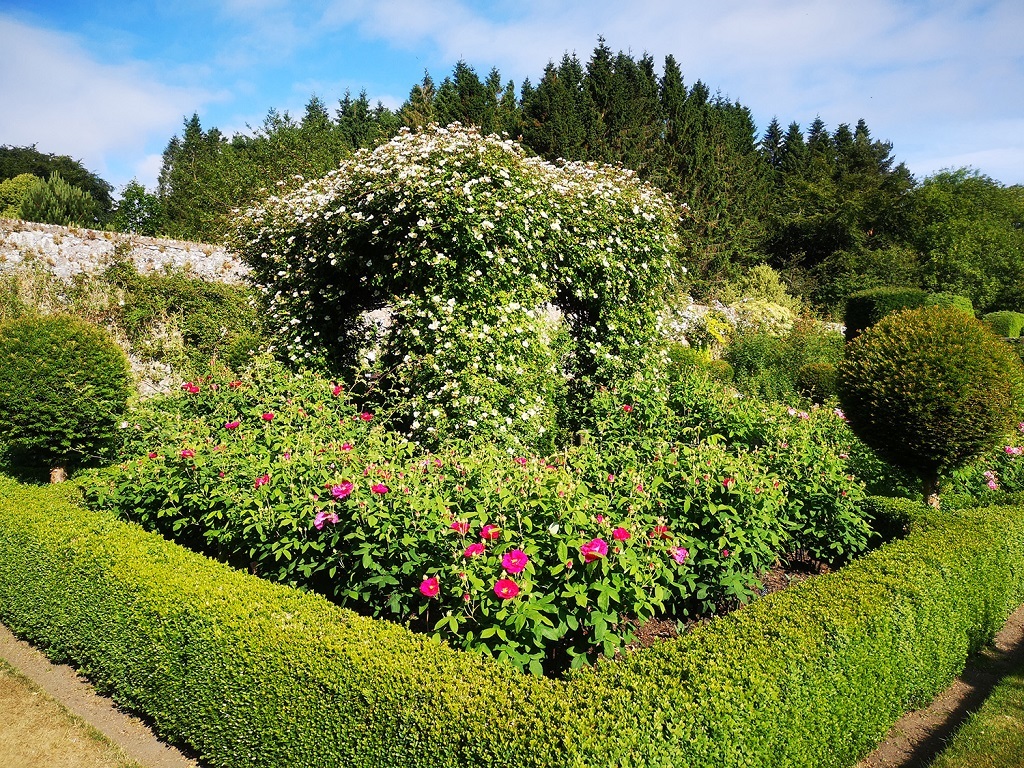Gardens are blooming across Scotland to mark the centenary of the end of the First World War centenary.
Gardeners at National Trust for Scotland properties across the north east of Scotland have cultivated striking memorial displays of Armistice flowers to remember those who lost their lives.
The Armistice installations have their own dedicated area in gardens at seven of the conservation charity’s most historical locations in the region, such as Crathes Castle and Drum Castle in Banchory, and Pitmedden Garden in Ellon in Aberdeenshire.

Each display was planted in June with the assistance of Royal British Legion members and can be easily spotted throughout the coming months by its border of white flowers such as alyssums, cosmos ‘purity’ and lavatera flowers, representing the colour of the Armistice.
The borders will also be marked with a red poppy design depicting war poems written at the time by Scottish poets Mary Symon and Violet Jacob, who herself lived in the House of Dun, a National Trust for Scotland property in Angus. Each garden also features historical facts about the iconic war symbol, the red poppy.
The idea came from Laurie Daguin, head gardener at Drum Castle, to mark the centenary of the Great War, as well as the 100th anniversary of the founding of the Royal Air Force.

Beautiful floral tributes to the fallen
Laurie said: ‘We’re very proud to have been able to commemorate the centenary in our own way and we hope that visitors to the gardens can learn more about what life was like for people around the time of the Great War.
‘Many of our properties had very prosperous gardens at the verge of the First World War, but they fell into disrepair when most of their workforces were called to action. We’re aiming to unravel the myths from the time of the war, such as who maintained the gardens while the fighting was taking place, while remembering all who fell during conflict.’
A number of National Trust for Scotland properties have war-time connections – Pollok House in Glasgow became a hospital for soldiers convalescing from WWI, Haddo House was used as a maternity hospital during World War II and Crathes Castle was used as a hospital after the Second World War.
TAGS

